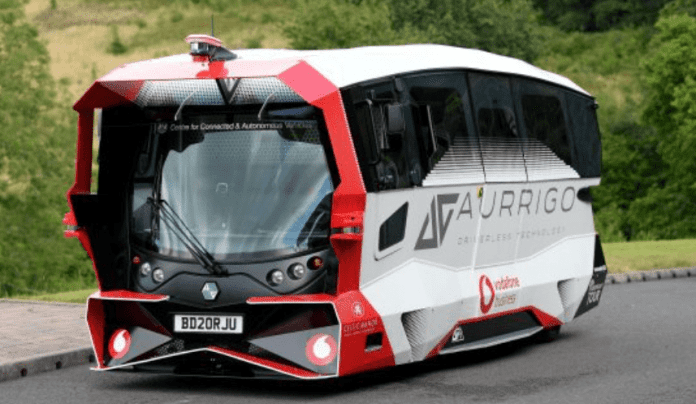Amazon Web Services (AWS) has announced the general availability of its AWS Wavelength multi-access edge compute (MEC) service in the UK, on Vodafone’s 5G network. The setup embeds AWS compute and storage services in Wavelength ‘zones’ at the edge of Vodafone’s 5G network, to shorten the roundtrip, and quicken decision-making, between sensing devices and sense-making tools.
Availability of the service in the UK, starting in London, will enable UK developers to produce lower-latency 5G applications, requiring livelier machine learning responses, including for sundry IoT cameras and sensing devices, and novel consumer-oriented video and game streaming. AWS cited compute-hungry industrial automation, video analytics, and machine learning inference as prime edge 5G use cases.
London is the first European city, and the UK is the first European country to go live with AWS Wavelength. Mobile operators have partnered with AWS variously in cities in South Korea (Daejeon), Japan (Tokyo), and the US (across 10 cities). Vodafone’s deal with AWS, announced late 2019, also covers Germany, where trials are underway in Dusseldorf , and general availability is scheduled for later in 2021.
The MEC setup, also available on LTE, enables developers to deploy parts of applications requiring lower latency (single-digit millisecond, they claim) in operators’ ‘edge’ data centres in towns and cities, using the same APIs, tools, and functions from AWS in regular cloud arrangements. Services are connected to the internet, and AWS’s regional cloud, via the MEC architecture, as well, for offloading less time-critical data.
Latency is reduced, meanwhile, for time-critical data insights, as key data traffic goes only between devices, cell towers, and Wavelength Zones at the edge of the mobile network. Companies Aurrigo, Immersal, InterDigital, Keyless, Net4, and Sportable have been confirmed as the first customers to start building applications on the new 5G-MEC architecture. Their apps are summarised below.
Developers can extend their AWS virtual private cloud (VPC) to include the desired Wavelength Zones, and run AWS services including Amazon’s Elastic Compute Cloud (EC2), Elastic Block Store (EBS), Elastic Container Service (ECS), and Elastic Kubernetes Service (EKS). They can use regular AWS services to manage, secure, and scale their applications.
George Elissaios, general manager for AWS Wavelength and director of product management at AWS, said: “Application traffic transits straight from the network to cloud services, instead of going over the internet. [This enables] developers to power new kinds of mobile apps requiring ultra-low latencies, massive bandwidth, and high speeds.”
Vatsa Kalyanasundaram, cloud and security director, Vodafone Business, said: “Commercial availability of MEC services for Vodafone business customers and independent software developers provides access to new cloud services. We’re now offering businesses the ability to get real time insight for faster decision making to deliver next-generation, immersive experiences that were not possible before.”
Aurrigo is developing self-driving vehicles for shopping malls, airports, and university campuses. It is trialling a shuttle service that transfers ‘park-and-ride’ customers in Cambridge to and from the university science park. “High-bandwidth connectivity, shared between multiple vehicles, a central control room and our servers, supports uses such as remote supervision and first-person video feeds,” the company said.
Immersal is developing an AR spatial mapping tool for the construction industry, to help design and build large urban complexes, such as city and retail spaces, airports, cinema chains, exhibition centers, art galleries, and other public spaces. “Producing large-space AR apps… requires ultra-low latencies, massive bandwidth, and high-speed network connectivity with 5G-enabled devices,” it said.
InterDigital is using the new architecture for smart factory use cases such as zero-defect manufacturing and augmented robotic telepresence, which require instantaneous analytics and decision making at the network edge to support rapid remote control of physical devices within a factory. “The success of emerging smart factory use cases depends on the edge being integrated within the 5G network,” it said.
Cybersecurity firm Keyless is developing “privacy-first passwordless authentication” solutions that combine “multi-modal biometrics with privacy-enhancing tech on an SaaS platform”. It said: “We are able to greatly improve speed and authentication latency time, which in turn provides an optimum user experience without compromising on user privacy and security.”
Meanwhile, IoT solution provider Net4 works on rapid device on-boarding and integration so customers can remove complexity and reduce time-to-market. It uses Wavelength for edge-based video analytics in various IoT use cases, notably for machine learning in video applications. “[5G-MEC] will come to the fore as video resolutions increase and more locations are added,” the company said.
Sportable is providing data analytics for team strategy and broadcast analysis in rugby and American football It is using the new setup to relay sensor data to the cloud, and back to coaches and commentators. “We’re helping remove on-premise storage and compute, and ad hoc networks… and using machine learning to provide deeper insights. These initiatives require speed, bandwidth, and quality of service.”

